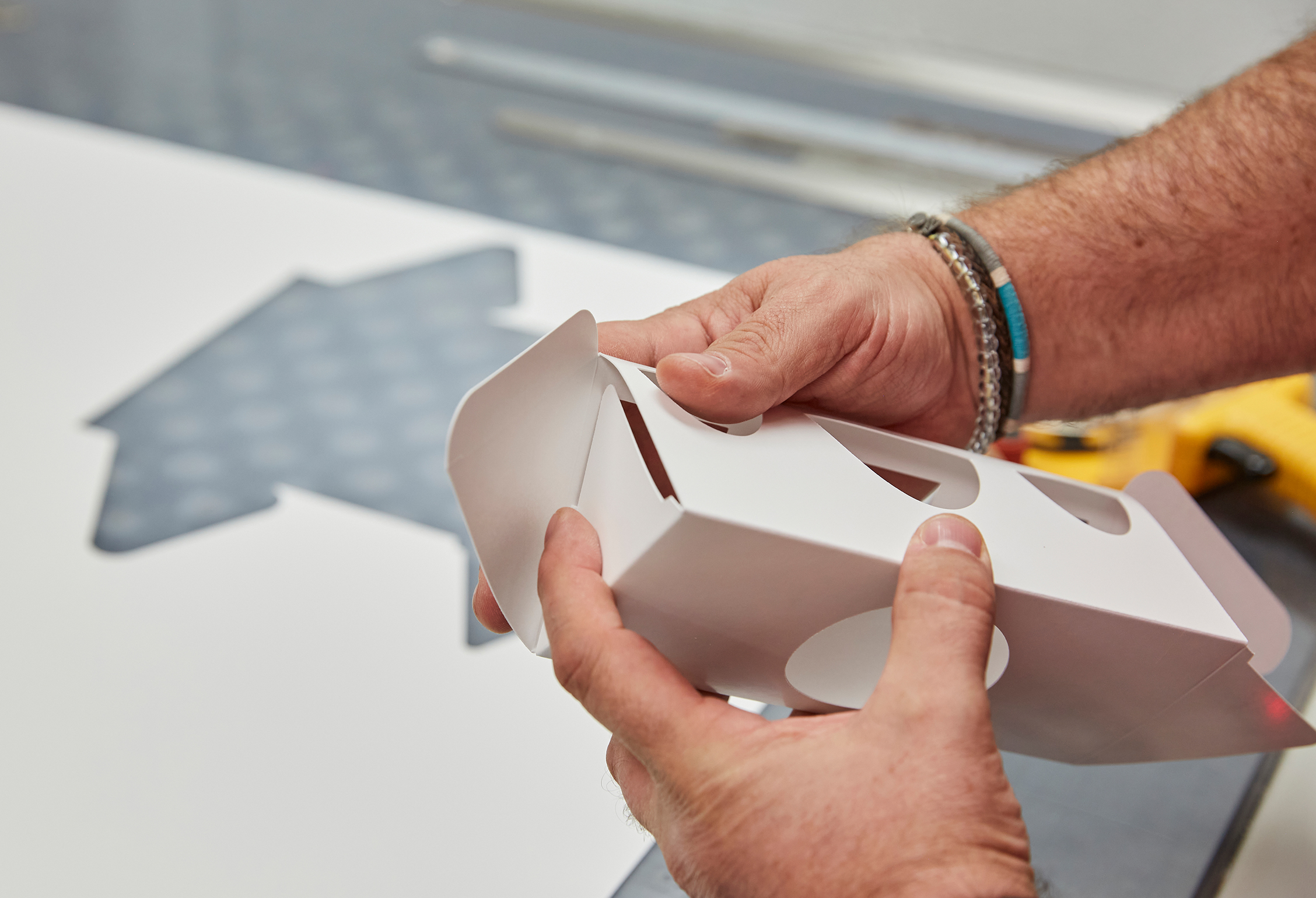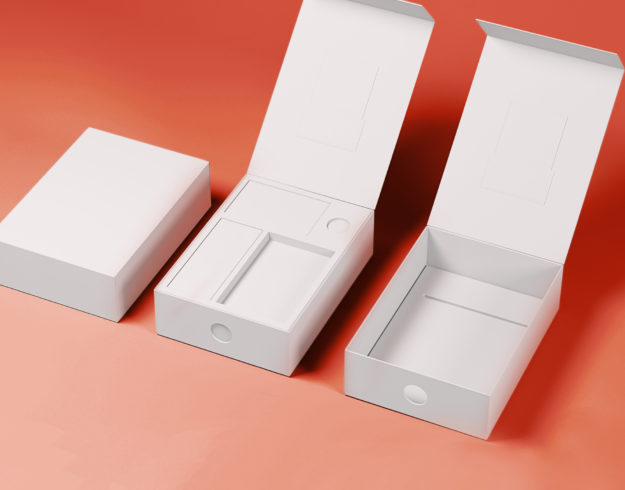Stephen Gould’s team of designers and engineers understand how essential packaging is in today’s economy. Whether it’s a delicate consumer product or an intermodal shipping container, we have a track record of designing feasible solutions that can be produced at scale and withstand the wear and tear of transportation, storage and consumer use.
Businesses around the world recognize that their packaging system is one of the most important components of their brand image. When you think about the centrality of packaging to the customer experience and the role it plays in purchasing decisions, it’s not hard to understand why more and more businesses are investing in the structural design of their packaging.
For many people, the word “design” is associated with the creative elements of packaging: color, typography, illustration, photography, and copywriting. Structural design focuses on the materials, shape, form, and functionality of packaging, all of which should work in tandem with creative aspects of packaging design. Companies are increasingly choosing to invest more into the structural design of their packaging as a way to differentiate their products and provide additional value to their customers.
This guide covers the benefits of structural design and how it can help your business achieve success.
Structural Design and the Customer Experience
Here are a few ways in which the structural design can positively impact the way your customers experience your products.
Protecting Products
Product protection is the most important task in structural design. To ensure that a package protects its contents, structural designers consider many factors including weight tolerance, rigidity requirements, and contamination risk. To ensure product structural safety, designers use a wide range of materials such as corrugated cardboard, polyurethane or polyethylene foam, expanded polystyrene (EPS), and various foamboards and paperboards.
For temperature-sensitive products like food, electronics, and aerosols, structural design is essential to protecting the product from external damage and spoilage during transit.
Enhanced Safety and Functionality
For some industries, packaging is essentially part of the product itself. Think about condiments, toothpaste or bottled beverages. Improving the safety and functionality of packaging directly impacts the quality of the product and the customer’s experience with it.
One common example of this is the resealable pouch that is often used for snack foods like trail mix, dried fruits, or candy. The packaging needs to be easy to open while preserving the freshness of the food inside. The quality of the product is contingent on the structural design of the packaging.
For other items like prescription drugs or household cleaners, the primary goal of the packaging is safety. These products need to be extremely functional while also providing an added measure of safety, both for the integrity of the product as well as to prevent children from easily opening them.
Elevated “Feel” Factor
Creative and structural design go hand-in-hand when it comes to conveying a certain feel for a package. The exemplar of this “feel” factor for packaging is Apple, which excels in creating sleek, minimal packaging. Apple’s style is often copied and for good reason: the Apple aesthetic and feel communicates that a product is innovative, refined, and upscale.
The success of Apple’s packaging is in large part due to their obsession with structural design. Rumors abound about the time and resources Apple invests in perfecting small details like the level of suction that occurs when removing a lid. All of this attention to detail is in service of building customer anticipation and making the first time opening an Apple product a special occasion. When structural design and creative design are perfectly in sync, it can create an emotional response in the customer.
Easy Transportation
Consumer research plays a significant role in packaging design. Form and functionality should anticipate how customers want to use the product.
A classic example of this is Go-Gurt, an on-the-go yogurt designed specifically for eating in transit. Yoplait turned the market on its head by addressing a fundamental customer need: yogurt that was easy to pack for school lunches and easy to eat anywhere without a spoon. The structural design of the packaging allows children to squeeze the package and eat directly from it.
Shelf Appeal
Structural design is also crucial to helping a product stand out at the point of purchase.
Patagonia is known for their dynamic shelf presence that attracts attention and reinforces the brand’s reputation for quality and sustainability. Their baselayer packaging is a great example of this. By switching from a typical roll bound by plastic, they created a hexagonal corrugated packaging system that decreases the carbon footprint of their packaging supply chain while lending itself well to creative and eye-catching in-store displays. The end result separates Patagonia from its competitors in the customers’ mind and factors into their purchasing decision.
The Benefits of Structural Design for Businesses
Structural design provides a number of benefits to companies that many may not even be aware of.
Reducing Costs while Optimizing Performance
As companies add more products and SKUs, packaging portfolios can become unorganized and unwieldy. This can lead to inefficient manufacturing and logistics operations, which eats into profits. Poorly managed packaging production also contributes to an inconsistent brand experience for the customer.
Investing in structural design can go a long way towards streamlining processes and getting large packaging portfolios under control. The goal is consistency in both presentation and processes. Packaging systems should appear visually similar and be designed in such a way that reduces complexity during manufacturing. Achieving consistency in both areas will reduce costs and improve the performance of packaging supply chains.
Reducing Environmental Impact
Packaging manufacturing requires resources like energy, water, chemicals, petroleum, minerals, and wood. It often generates air emissions including greenhouse gases, heavy metals and particulates, as well as wastewater and/or sludge containing toxic contaminants. The impact of packaging on the environment can’t be ignored.
Responsible companies seek to build more sustainable practices into their packaging production. Structural design can aid sustainability in many ways, from unlocking new opportunities to use recyclable or compostable materials to improving manufacturing processes to reduce waste and even move toward circular, closed loop systems. A company’s reputation for sustainability is increasingly valued by customers and factors into their purchasing decisions. Sustainability should not be seen as a necessary evil that adds costs to the bottom line. In reality, prioritizing sustainability can lead to beneficial impacts on topline revenue and cost structure.
Contributing to Customer Satisfaction
In an era when customers primarily interact with companies online, packaging takes on even greater importance in the customer journey.
Packaging design can assist customers in assembling and setting up products on their own, which reduces call to customer service and increases satisfaction. The form and structure of packaging can invite reuse and add value as an art object in the home. Clever or inventive packaging is often shared on social media, putting your product in front of more people with no marketing spend.
Structural Design Solutions with Stephen Gould
Stephen Gould’s team of structural designers and engineers prides themselves on their ability to concept, design, and produce packaging of the highest quality. With multiple Design Centers, we’re able to offer the full range of structural and creative design services, from concepting, to engineering, to prototyping, to graphics and photography.
Our team is always looking for ways to improve and enhance packaging functionality without sacrificing aesthetic appeal. Whether it’s a high-end beauty product or rugged cases for industrial machinery, we have a track record of feasible solutions that can be produced at scale and withstand the wear and tear that occurs during transportation, storage and consumer use.
Contact us today to learn more about our structural design services.


